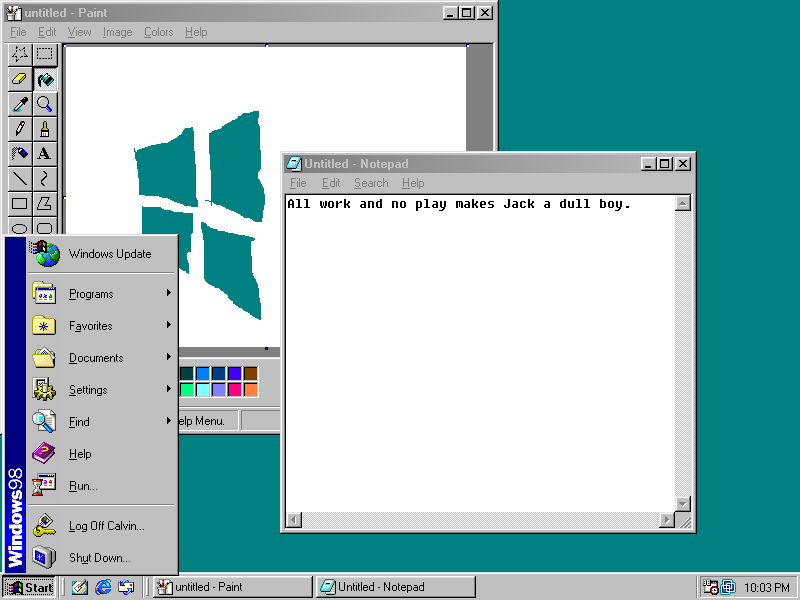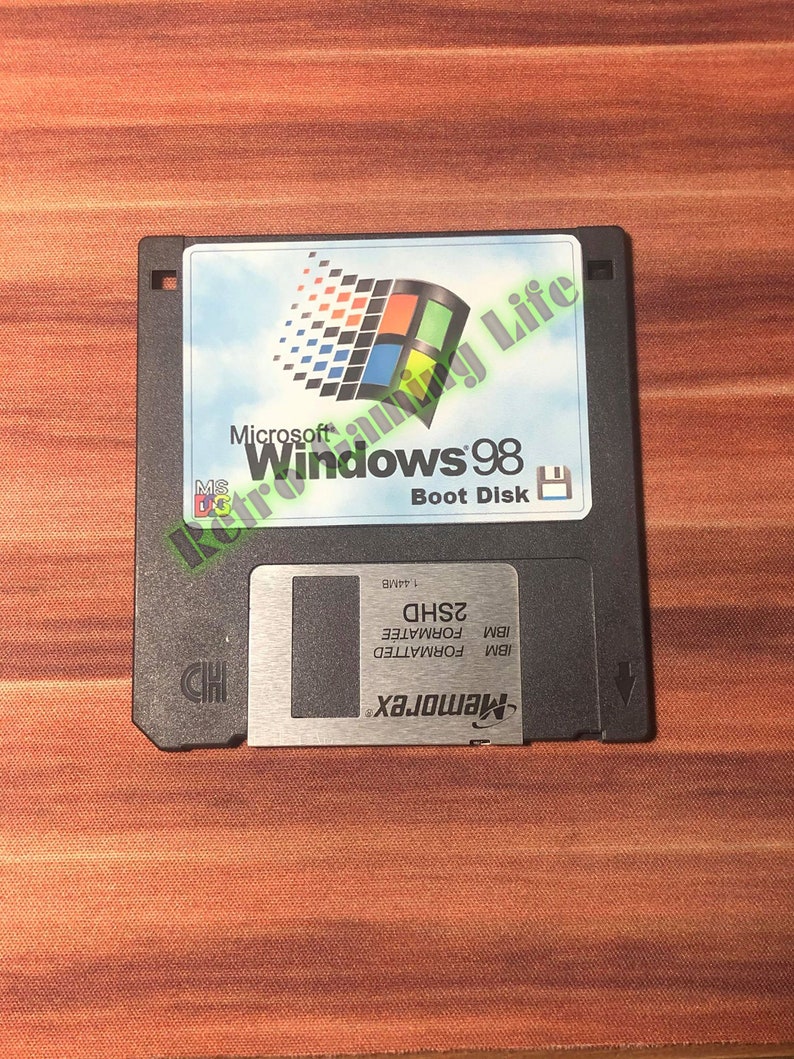

- #WINDOWS 95 OSR2 AND BOOT FLOPPY IMAGES INSTALL#
- #WINDOWS 95 OSR2 AND BOOT FLOPPY IMAGES UPDATE#
- #WINDOWS 95 OSR2 AND BOOT FLOPPY IMAGES DRIVER#
- #WINDOWS 95 OSR2 AND BOOT FLOPPY IMAGES SOFTWARE#
- #WINDOWS 95 OSR2 AND BOOT FLOPPY IMAGES PC#
A search on the internet suggests that numerous updates are available. Sadly, I haven’t been able to get WU working in Windows 95. Installing IE5.5 required me to create an ISO image to deliver it via the optical device.
#WINDOWS 95 OSR2 AND BOOT FLOPPY IMAGES UPDATE#
While there are still some problems, Web pages look a lot better under IE5.5.Ī Tools menu item and Windows Update (WU) has been added to the IE5.5 menu. IE5.5 SP2 is the highest version of IE that is compatible with Windows 95. As you can see from the image below, web pages look pretty grim on IE3. Being non-standard and out-of-date, it complained when attempting to display web pages.
#WINDOWS 95 OSR2 AND BOOT FLOPPY IMAGES DRIVER#
The tutorial also sheds light on display limitations within VirtualBox for Windows 95 and recommends the use of a SciTech Display Doctor driver to address the limitations. At this stage, also note that the VM network adapter has been identified as an AMD PCNET Family Ethernet Adapter (PCI&ISA). The view of Device Manager below provides additional clues to what we’re observing. Note that the display is standard VGA and there are some unknown devices. This VirtualBox tutorial states that ‘Windows 9x is not officially supported by VirtualBox team, which means, that it lacks Guest VM Additions, and it runs slowly, because VirtualBox is not optimized to run Win 9x.’
#WINDOWS 95 OSR2 AND BOOT FLOPPY IMAGES INSTALL#
However, I noticed that Windows 95 only runs in 640 x 480 resolution and 16 colours.Īttempting to install VirtuaBox Guest Additions throws up the following dialoge box: I also noticed that I have network visibility.

Refer to this Microsoft article for an explanation.Īfter finalising setup and booting into Windows, the first thing that I noticed was sound. A Windows 95 VM still runs on VirtualBox 5.x.Īs I found out later, the issue stems from a ‘divide by zero’ problem as a result of using a modern-day processor for the host system. Curiously, though not supported, WFW 3.11 still works under VirtualBox 6.x. The solution required Enable VT-x/AMD-V to be unchecked as suggested in this post.Įdit (): This breaks under VirtualBox V6.1. When first booting Windows 95 after initial setup, I’m confronted with the first hurdle to overcome: I also install the IP protocol at this stage. I allow Windows 95 to detect hardware during installation.


Switching between host and guest systems took a little bit of getting use to. Once the guest OS was active, the Right-Ctrl key was used to make the host OS active. The floppy was A: and the target drive for the system was C: as expected.Ī mouse click within the VM windows was used to make the guest OS active. The only curiosity for me, was that VirtualBox assigned the letter R: to the optical drive. VirtualBox handles both optical and floppy devices well. A boot floppy (or image) is also required. What makes Windows 95 installations different to that of later Windows OSs is that the installation CD (or ISO) is not bootable. ‘Can I see stuff, even if I can’t readily access it?’ In-scope will be graphics and sound capability and elementary network functionality and internet access i.e. Out-of-scope for this series of evaluations are network operations covering file and print services, and Windows Update.
#WINDOWS 95 OSR2 AND BOOT FLOPPY IMAGES PC#
Time permitting, I may even decide to look at Virtual PC from Microsoft, and possibly even DOSBox. In a future post, I’ll cover VMware Workstation Player. Under the microscope in this post is VirtualBox version 5.1.22 from Oracle, the latest version available at the time of writing this post. I decided to skip this complication as it’s possible to install IE5.5, the last version of IE that Windows 95 supported. I also didn’t bother with Windows 95 OSR2.5 (Windows 95C) as it bundled IE4. I avoided Windows 95 OSR1 (Windows 95A), as FAT32 only first appeared in OSR2. The guest OS I used in these evaluations was Windows 95 OSR2 (also referred to as Windows 95B).
#WINDOWS 95 OSR2 AND BOOT FLOPPY IMAGES SOFTWARE#
I decided to provide further detail in this post not so much to focus on Windows 95, but as a prelude to investigating how well different virtualisation software handled legacy operating systems. In a previous post, I provided an overview of my experience with installing Windows 95 in a VM.


 0 kommentar(er)
0 kommentar(er)
